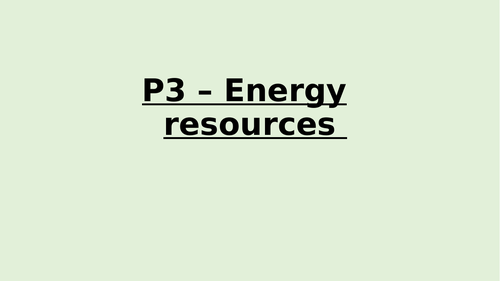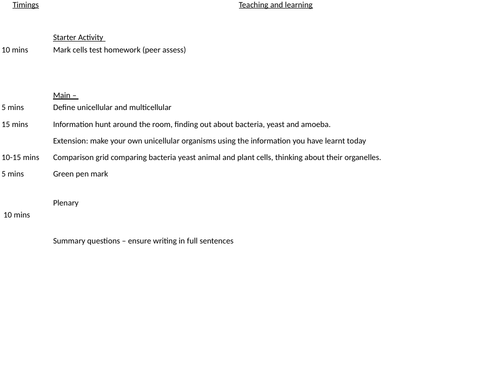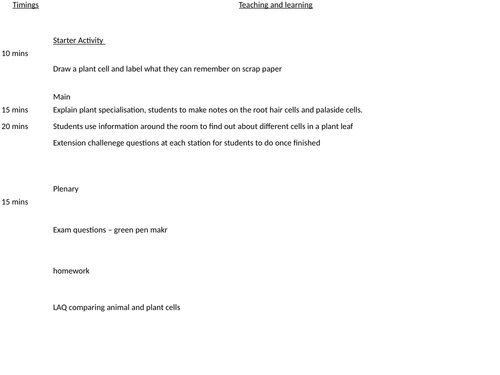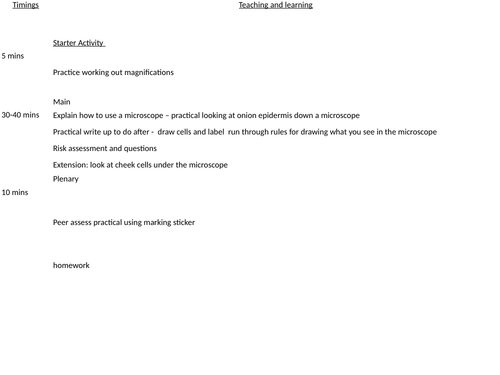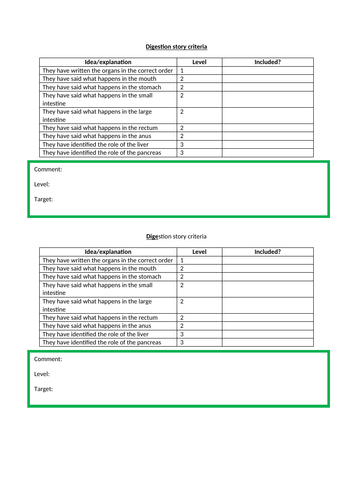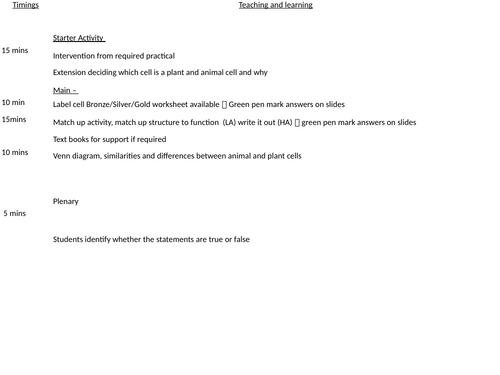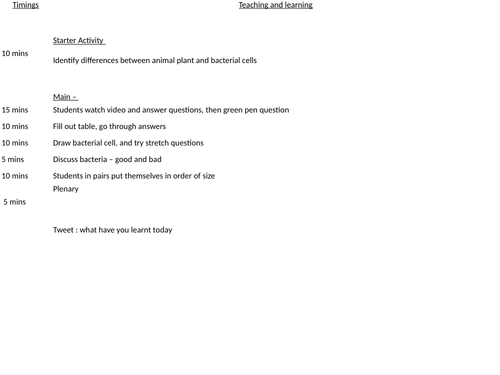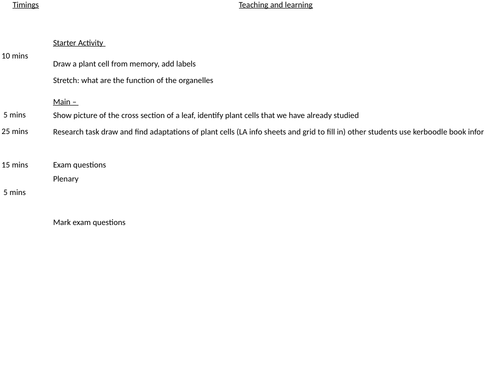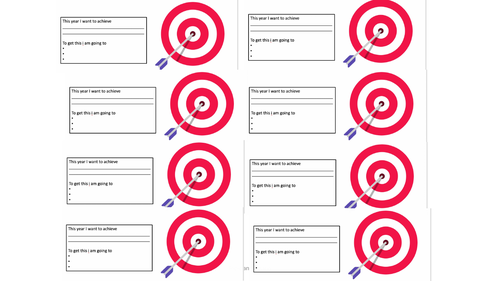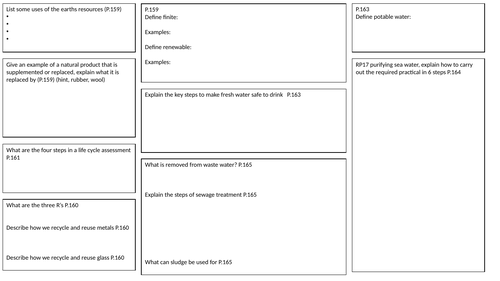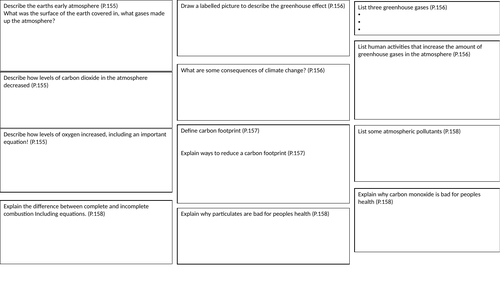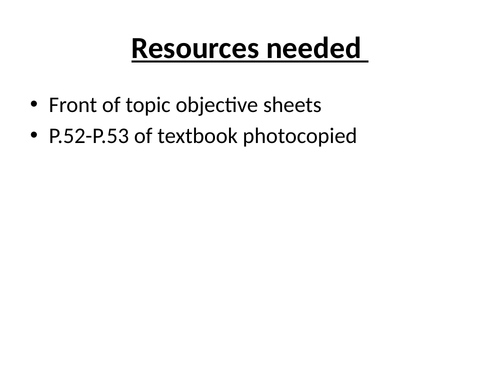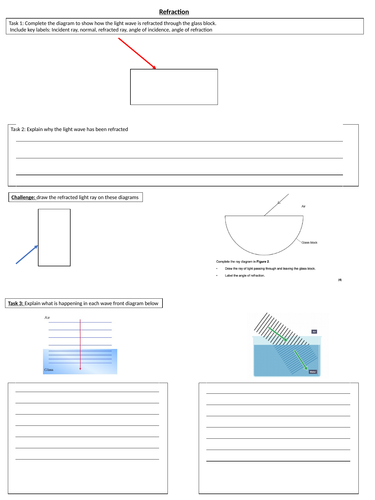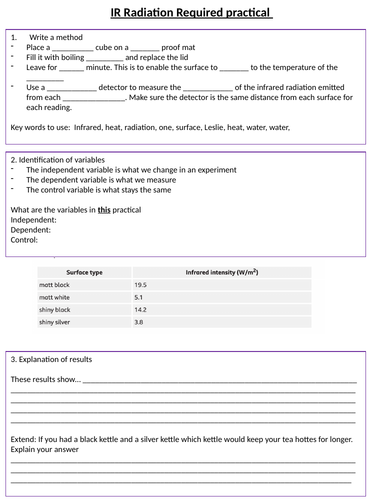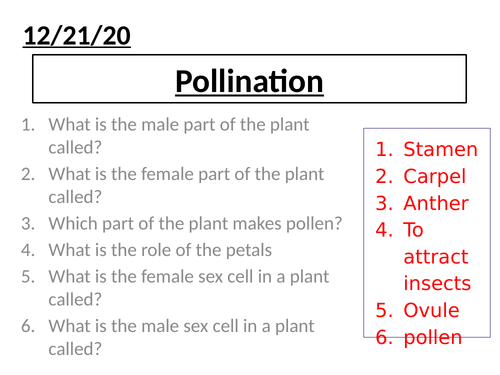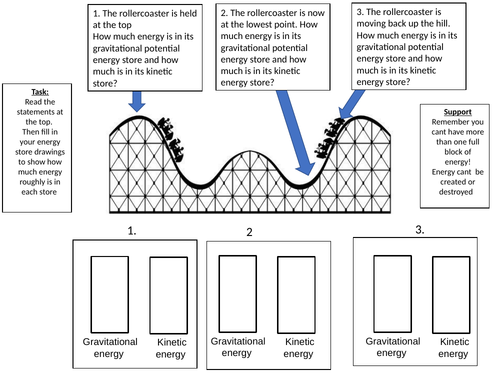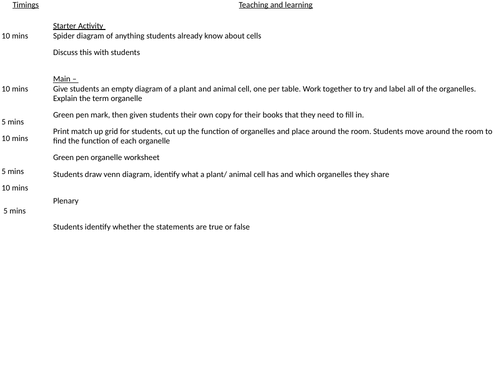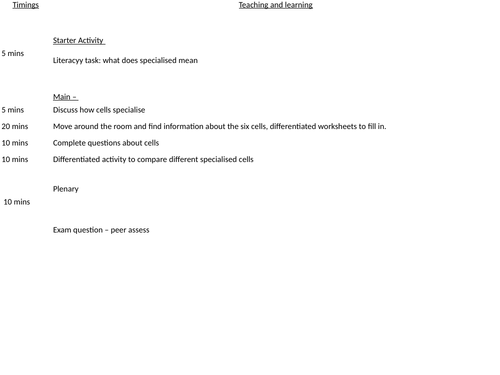
124Uploads
33k+Views
8k+Downloads
All resources

P3 - Energy resources summary
Summary of the P3 topic
Including a revision booklet for students to work through

Unicellular organisms KS3
Aimed at mixed ability year 7 class
Starter: how many cells make up the human body
Main: key definitions uni/multi cellular
task to move around the room and find out about different unicellular organisms
Comparison task to compare organelles in unicelllular organisms
Plenary: summary questions based on the lesson

Plant cells, tissues and organs KS3
Aimed at mixed ability year 7 class - some resources from other areas of TES
Starter: memory task, draw and label a plant cell with all they can remember
Main: draw and label root hair cell and palasaide cell, write the function and adaptations
use information around the room to fill in diagram of cells in a leaf and how they help photosynthesis
extension questions at each station
Plenary: exam questions

Microscopes practical KS3
Aimed at mixed ability year 7 class
Starter: work out magnification
Main: Complete practical looking at onion epidermis and cheek cells
practical sheet to fill in
Plenary: Peer assess their practical work

The digestive system KS3
Aimed at mixed ability year 7 class
Starter: label the digestive system, green pen mark
Main: Move around the room and find information about the key organs of the digestive system
HA/MA/LA sheets to fill in
Write a food story of food moving through the digestive system
Plenary: peer assess food story, marking sticker included

B1.2 Animal and plant cells
Aimed at a mixed ability year 9 class
Starter: identify which cell is a plant cell and which is an animal cell and explain why
Main: Label plant and animal cells differentiated worksheets (bronze silver gold)
Match up strucutre and function of organelles
venn diagram similarities and differences between plant and animal cells
Plenary: true/false questions

B1.3 Eukaryotic and prokaryotic cells
Aimed at a mixed ability year 9 class
Starter: identify differences between plant/animal/bacterial cells from images given
Main: Watch video, answer questions, green pen (answers provided on ppt)
Fill out comparison table and draw own bacterial cell
stretch questions to reach highest levels
Discussion are all bacteria bad? images to support
6 mark question to compare cells
Plenary: order of magnitude, in pairs select an image then put themselves in order

B1.5 specialisation in plant cells
Aimed at a mixed ability year 9 class
Starter: recap draw and label plant cell. Stretch, describe the role of each organelle
Main: Discuss where the palaside cells are found, discuss why they are adapted for their function being here
research task: HA/LA versions find out about root hair cells, xylem, phloem
Exam questions
Plenary: mark exam questions

Solubility KS3
Suitable for year 7/8
Recall starter
Followed by explaination and practice of the new keywords solute/solvent/solution
Questions and tasks provided with answers
mini practical to do with solubility, does it dissolve or not?
Questions for follow up to the practical
Recall plenary

C12 revision sheet
C12 - the earths resources summary sheet
Aimed at students with targets of level 4’s
page numbers are from CGP foundation revision guide

C11 Summary sheet
aimed at students with targets of level 4
page numbers refer to pages in CGP foundation revision guide

B1.1 The blood
Aimed at a mixed ability year 9 class
Starter Activity
C2 retrieval practice questions – go through the answers.
Stick in objective sheets for this topic
Main –
Think pair share – what is the blood made up of? Go through answers, show students a photomicrograph of the different cells
Students then use the handout to make a grid of the function of the different parts of the blood.
Extension questions at the bottom to challenge level 4+ students
Go through answers, ensure everybody knows key function for each type of cells
Six mark question – students have ten minutes to answer questions. Then green pen mark
Watch a video of a blood donation, have a mini debate – would you give blood?
Plenary
Plenary key questions to answer

Energy transfer diagrams
Using energy transfer diagrams to help with the understanding that energy is conserved.

Compounds
Suitable for KS3
Includes:
Introduction to compounds
Particle diagrams of elements and compounds
Naming compounds with two and three elements
Mini practical to compare elements and compounds
All answers included

Plant and animal cells KS3
Aimed at a mixed ability year 7 class
10 mins
Spider diagram of anything students already know about cells
Discuss this with students
Give students an empty diagram of a plant and animal cell, one per table. Work together to try and label all of the organelles. Explain the term organelle
Green pen mark, then given students their own copy for their books that they need to fill in.
Print match up grid for students, cut up the function of organelles and place around the room. Students move around the room to find the function of each organelle
Green pen organelle worksheet
Students draw venn diagram, identify what a plant/ animal cell has and which organelles they share
Plenary
5 mins
Students identify whether the statements are true or false

Animal cell specialisation KS3
Aimed at a mixed ability year 7 class
Starter: What does specialised mean?
Main: research task move around the room to find out about specialised animal cells
differentiated worksheet
answer questions about the cells
differentiated task to compare different cells
Plenary: Exam questions

